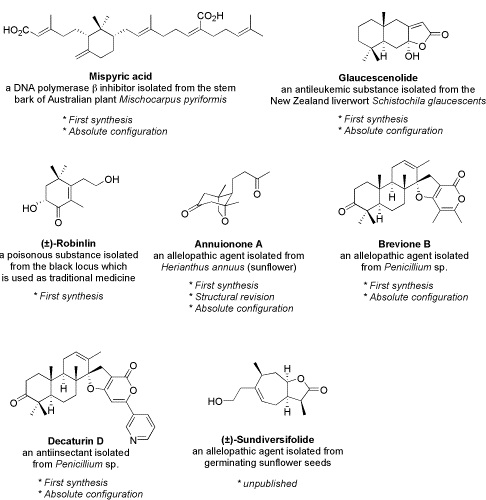Natural Products ChemistryGraduate School of Agricultural Science, Kobe University |

Research Description
Total Synthesis of Natural Products

Bioluminescence of a bivalve mollusk
Pholasin is a photoprotein of a common piddock (Pholas dactylus). The bioluminescence of the piddock was first studied 120 years ago. Pholasin is commercially available as an indicator of reactive oxygen species. Pholasin is the registered trade mark of Knight Scientific Limited (Plymouth, UK).

Pictures: The piddock has luminescent organs, which emit blue light. The organs contain a photoprotein for light emission.
The organic substance of Pholasin had not been determined. We focused on the similarity between Pholasin and symplectin (a photoprotein of luminescent squid). Symplectin uses dehydrocoelenterazine (DCL) as organic substance.
Succeeded in isolating DCL as a derivative from Pholasin, we concluded DCL is the organic substance for constructing a chromophore (a chemical structure for light emission) of Pholasin.

Scheme: DCL binds to apo-protein to form the chromophore, which is oxidized by oxygen for light emission.
By synthesizing DCL derivatives, we try to gain fundamental understanding of this bioluminescent system.